
3 reasons why your employees may be underperforming

Written by

Senior Content Marketing Manager, Culture Amp

Director of People Science Research, Culture Amp
No organization wants underperforming (or low-performing) employees, nor does any individual want to be categorized as an under performer. Yet, the truth of the matter is that low-performing employees exist in every organization – so what can leaders do about this?
There are two related reasons why the answer isn’t to simply replace them. First, replacing employees is expensive and can cost anywhere between 30-200% of the departing employee's salary. Secondly, performance isn’t a static state of existence. An employee’s performance is fluid and can improve or decline depending on the type of support provided. For no group is this more true than with under performers. For under performers who were still with their company after one year, we found that 7 out of 10 improved to become “solid performers.”
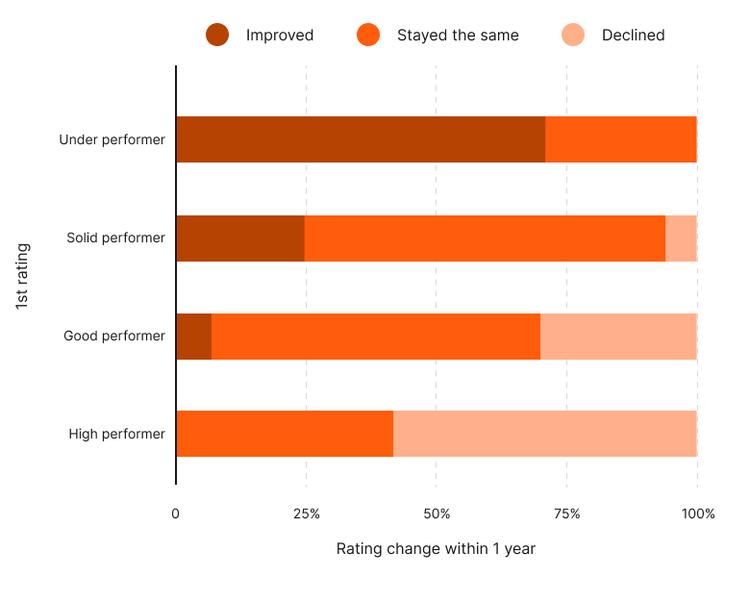
In this second part of Culture Amp’s research series exploring the relationship between engagement and performance, we look into why employees at your company may be underperforming. By understanding the possible causes that factor into low performance, you’ll be able to map out high-impact actions that can help your underperforming employees improve.
Our methodology
In our research, we standardized the rating scales of 741 companies and over 200,000 employees. Employees who were defined and rated by their manager and peers as being in that organization’s bottom performance bucket make up the “under performers” group.
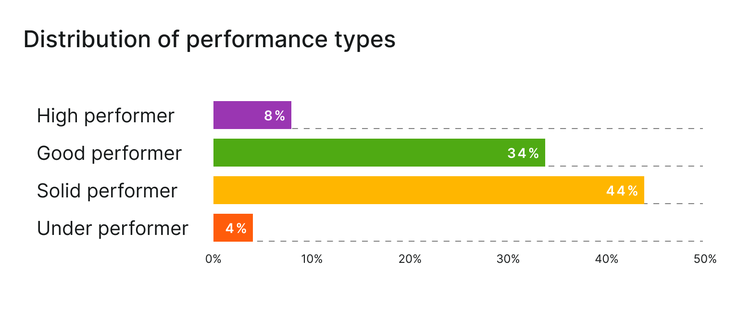
Depending on the organization, underperforming employees typically make up between 0 and 20% of an organization, with the median being 4%.
By analyzing the engagement scores of these employees and following them longitudinally through to exiting, Culture Amp was able to identify three potential reasons for underperformance among your employees.
To learn more about our methodology, read the first part of the series, “Exploring the relationship between engagement and performance.”
3 explanations for low performance among your employees
Multiple factors can drive underperformance, and every individual is unique. However, our data shows that at the highest level, there are three main reasons your employees may be underperforming:
- Under performers are less motivated because they don’t have a strategy for achieving their goals
- They feel like they’re in the wrong role, and thus don’t feel committed
- They aren’t supported by their manager
1. They don’t have a strategy for achieving their goals
While all employees value belonging and career development, underperforming employees are uniquely motivated by having a shared strategy, meaning a plan of action to achieve their goals.
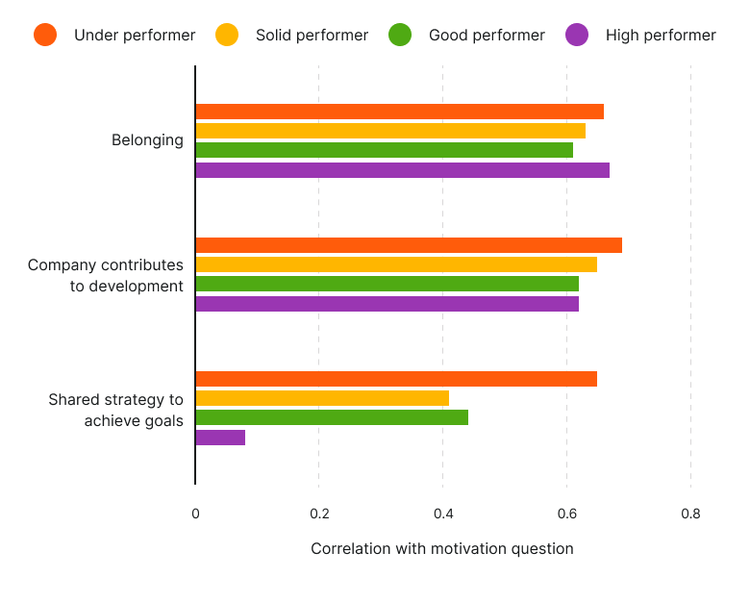
We pay attention to motivation because it’s a measure of how much effort a given employee is willing to make in their role. Intuitively, we can deduce that employees who lack motivation are more likely to be low-performing employees. In contrast, highly motivated employees are more likely to be solid, good, or high performers.
In our study, we found a uniquely high correlation between motivation and strategy for under performers, which suggests that they, more than other employees, need a shared strategy to feel motivated. It’s possible that they haven’t been clued into the overall strategy, or that they need it more clearly spelled out in order to execute on it. In that sense, some of your under performers may be underperforming because in order to succeed, they need a path for reaching their goals.
How to take action: If an employee is underperforming, consider an exercise where you walk through that employee’s process for accomplishing tasks and identify where it differs from the ideal path. It can also be a good idea to pair underperforming employees with other employees to work on tasks, so they can learn new strategies for success firsthand.
2. They could be in the wrong role
Like motivation, an employee’s commitment can directly influence their performance. If an employee doesn’t see a long-term future at the company, they are less likely to make an effort and care about how others perceive their performance.
We ask employees how strongly they agree with the following statements, which are related to their commitment to their organization:
- “I rarely think about looking for a job at another company”
- “I see myself still working at [Company] in two years’ time”
Our people scientists have consistently found these two questions to be the most important for predicting employee turnover. That’s why we were surprised to find that, for under performers, “I am happy with my current role relative to what was described to me” is the second most predictive question, above “I rarely think about looking for a job at another company.”
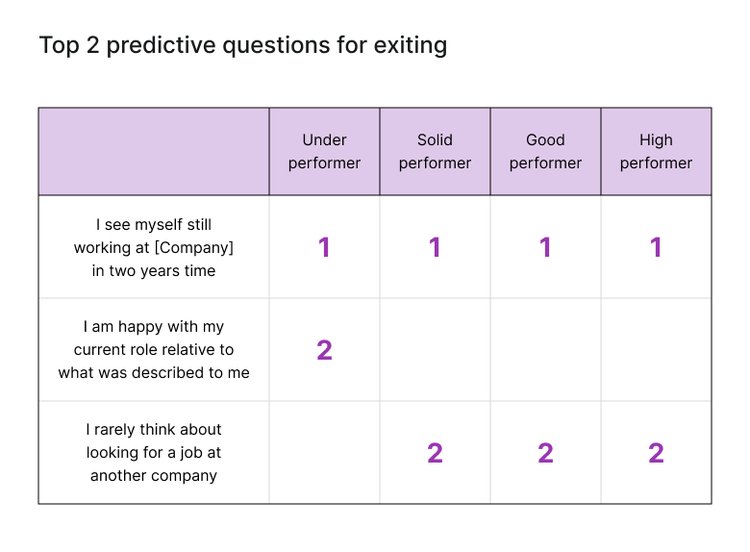
As you can see below, underperforming employees respond much less favorably to the question, "I am happy with my role relative to what was described to me," than employees in the other performance buckets.
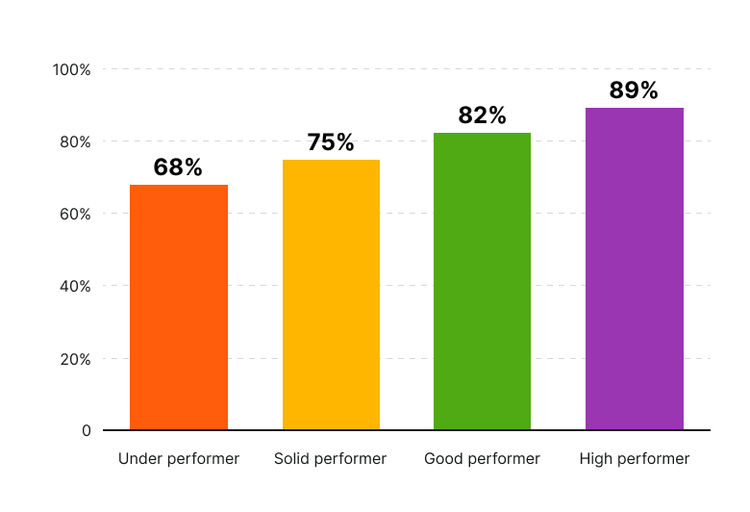
Why could this be? One explanation can be found in the wording, “I am happy with my current role relative to what was described to me.” There is a possibility that there was a miscommunication during the recruiting process, in which your currently low-performing employees were led to believe that their role was going to be one thing, only to join the company and realize it involves something completely different.
In other words, some of your employees may be underperforming because they feel like the “role rug” was pulled out from under them, and/or they aren’t equipped with the right skills to deliver on the role “they ended up with.”
How to take action: Address and mitigate underperformance stemming from role misfit early on in an employee’s tenure. Throughout the onboarding process, ask questions like “Is the role so far meeting your expectations?” “What has surprised you so far about the role?” so you can identify and ameliorate any misconceptions.
If you’re seeing low performance from an employee with longer tenure, have a frank discussion with them about whether a lack of role alignment may be contributing to their performance. You’ll want to explore and understand the employee’s strengths, motivations, and aspirations. If it’s clear that they’d be more successful or feel more motivated in a different role, you’ll want to see if their goals align with the business’s needs.
3. They aren’t being well supported by their managers
Compared to solid, good, and high performers, under performers have the least favorable opinions of their managers. This is particularly true for questions that directly impact an employee’s performance.
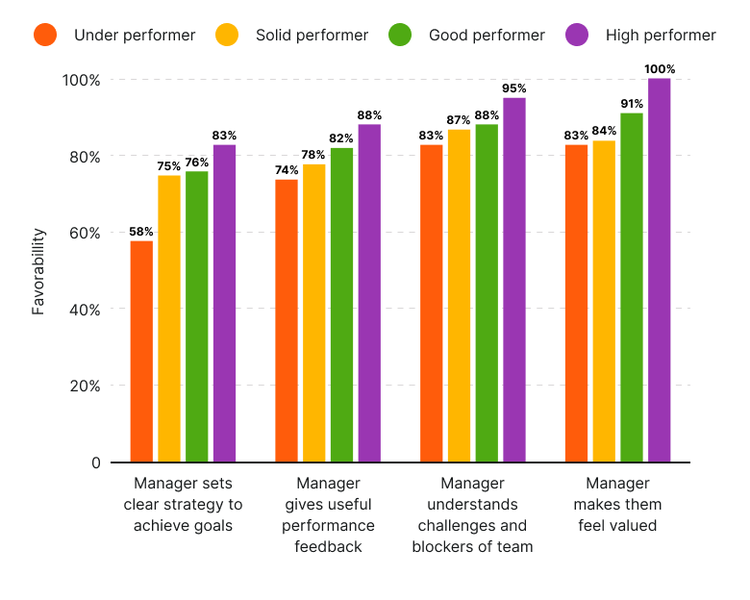
This indicates that a proportion of employees rated as under performers may be underperforming because their managers aren’t equipping them to reach their full potential. Specifically, they don’t feel like their managers help them set a strategy for achieving their goals, give them useful feedback, or understand their challenges.
Because of this, under performers are the only group in which managers come up as one of the top three reasons for leaving in exit surveys.
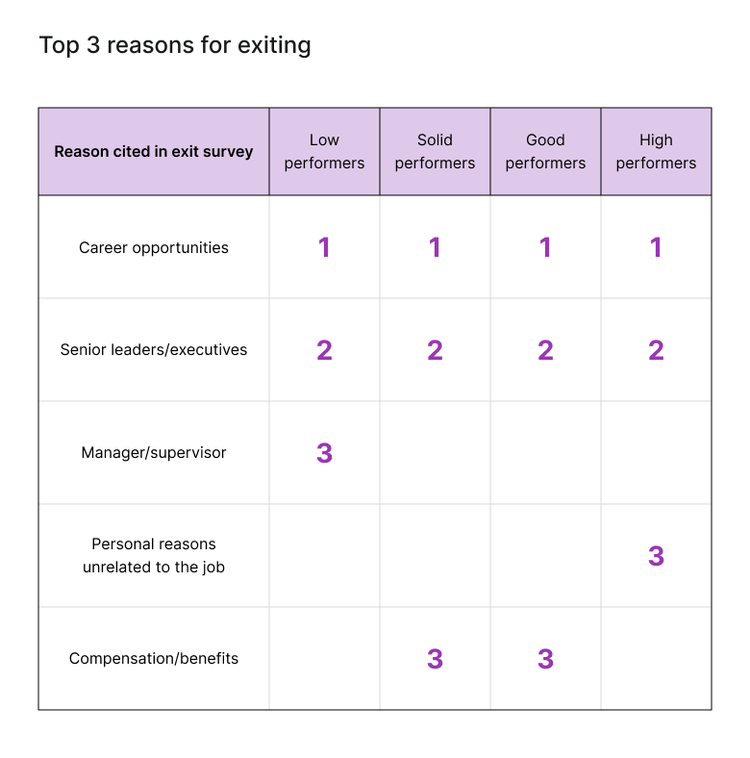
To be clear, we don’t know if these managers are treating the underperforming employees vastly differently than other employees or if they just aren’t compatible. Either way, the outcome is the same: Underperforming employees end up having a worse experience with their managers, and this significantly factors into their decision to leave.
How to take action: First, see if this negative experience is widespread. Are other employees having a similar experience with that manager? If so, that manager either needs additional development and training, or may not actually want to be a manager.
If it’s an isolated problem, try to mediate between the employee and their manager to see what steps could be taken to get the employee what they need to succeed.
Finally, consider if the employee should or could be placed under a different manager.
Identify the reasons for underperformance in your organization
Our data shows various reasons why an employee may be underperforming, many of which are not their fault. Perhaps they haven’t been set up with a solid strategy for achieving their goals, or their manager may not adequately support them. Or, there’s a chance that they were sold a role completely different from the one in which they currently find themselves. Whatever the reason, encourage managers and leaders at your organization to work to understand and empathize with your underperforming employees’ situation and find solutions that can help them improve their performance in the future.

Upskill your managers
With Skills Coach, harness the power of behavioral science and spaced repetition to help managers develop the skills they need to succeed.
We’ll be back next week with the final part of the research series, exploring how you can take your employees from good performers to high performers. To ensure you don’t miss out, bookmark this page or subscribe to the People Geekly newsletter to get the latest HR insights, news, and events – straight to your inbox.
Read the rest of the series:



